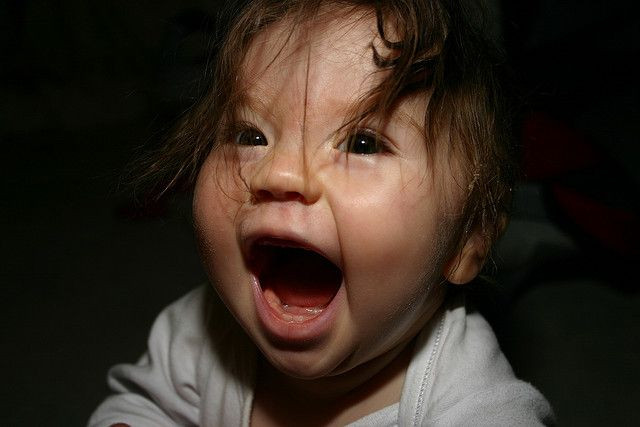Schadenfreude May Be More Innate Than Learned, As 2-Year-Olds Display Pleasure In Misfortune

Everyone likes to see someone slip on a banana peel. We would never hope to slip on it ourselves, of course. The joy is found entirely in seeing someone else suffering, if only a small amount with little actual damage or injury. It may be tempting to say we learn this behavior from others, but new research suggests children as young as 2 years old show traces of the malicious behavior.
The Germans call it “schadenfreude.” We call it laughing at other people’s pain, or getting joy from their misfortune. No matter how you slice it, getting your kicks from someone else’s suffering is hard to justify — unless, of course, it were hardwired into us. Science spends a great deal of time untangling our social influences from our biological ones. And schadenfreude is a classic example: If 2-year-olds are anything to go by, we may just be born that way.
“One possibility is that schadenfreude, as well as other competitive social comparison based-emotions such as envy and jealousy, originally evolved, as a response to competition between rivals over limited resources,” the team wrote in their report. They explored this behavior among a group of children 24 months old. Each experiment included one child, his or her mother, and a friend of the child. In total, there were 35 such triads.
The study began with the mother reading a story. Somewhere nearby were the two kids, engaging in the same activity. In one version of the study, the mother spilled water on her book, making it unreadable. The team observed the kids’ reactions. In another version, the mother read the story to the friend of the child. And again, she spilled water on the book. The researchers recorded how the uninvolved children reacted.
What they found gave clear indications of schadenfreude. In the first version of the experiment, the children didn’t laugh at all when the mother spilled water on her book. But when children had to watch their moms interact with another kid, suddenly the water spilling on the book elicited in them a joyous reaction. It was as if the accident of spilling the water, which spoiled reading time, served to justify the wrongdoing of the mother reading with another child.
Something that stood out to researchers were the ratings of jealousy, which far surpassed those of schadenfreude. “Indeed, it has been suggested that jealousy is more intense than other social comparison based emotions such as envy,” they wrote, “perhaps because it involves an extreme fear of loss of maternal attention.”
Jealousy sits right on the border of envy and schadenfreude. It’s the difference between being passive about people’s gain over yours and being active in trying to restore the balance by knocking them down. Prior research has revealed this tipping point in children as young as 9 months old. A 2013 study found kids who showed a difference in tastes from characters in a puppet show were more likely to support a character that harms the disagreeing puppet than support a character that helps one they agreed with.
"Infants might experience something like schadenfreude at the suffering of an individual they dislike," explained study author and psychological scientist, Kiley Hamlin. "Or perhaps they recognize the alliances that are implied by social interactions, identifying an ‘enemy of their enemy’ (i.e., the harmer of a dissimilar puppet) as their friend." This friend doesn’t even have to be a person — recall the glass of water spilling on the book and the purpose it served.
Don’t be misled; the moral of the story here isn’t to exploit our jealousy and schadenfreude just because we’re born with a tendency to compare ourselves to others. Plenty of traits that seem innate are undesirable, like laziness or shyness. But even these undesirable traits can work in our favor — the lazy person is the one who will find efficiency in a tough job; the shy listen.
Jealousy is a teachable moment for parents, who can explore their children’s feelings with them and instill gratitude early. It’s a chance to cultivate empathy and to prize cooperation over material competition, and maybe to leave just a little bit of room left over to appreciate the occasional, well-placed banana peel.
Source: Shamay-Tsoory S, Ahronberg-Kirschenbaum D, Bauminger-Zviely N. There Is No Joy like Malicious Joy: Schadenfreude in Young Children. PLOS ONE. 2014.
Published by Medicaldaily.com



























